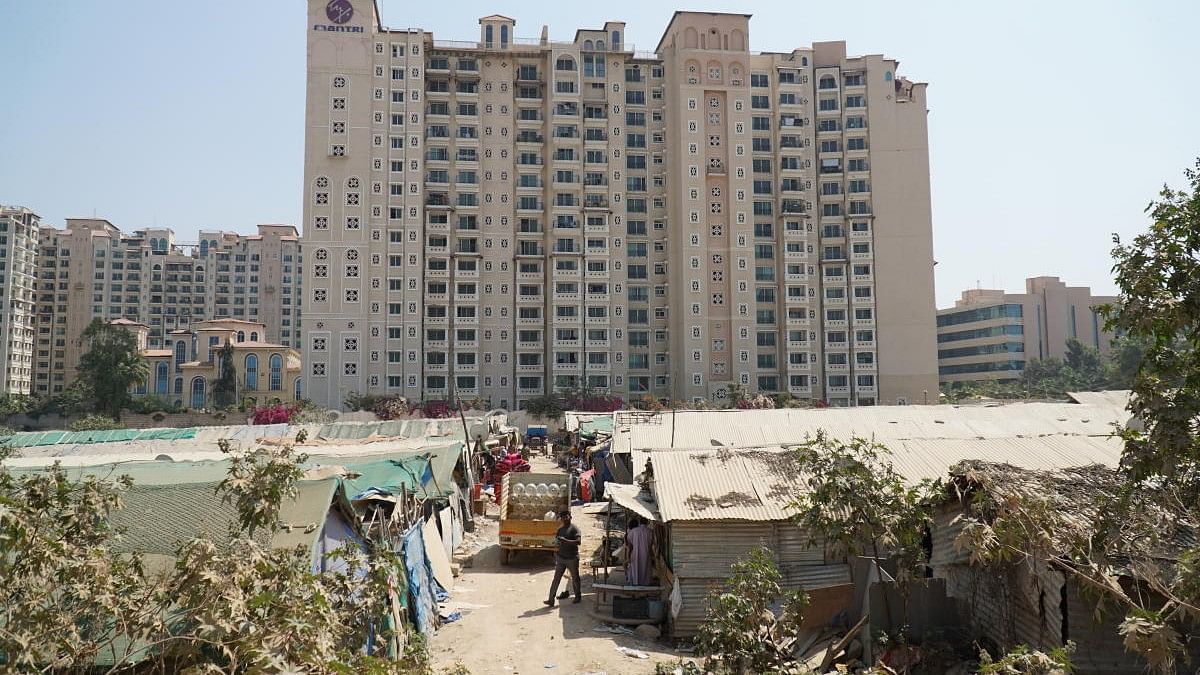
Slums in Whitefield
Credit: DH Photo
Last week, John Turner, an architect and urban planner known for his work on informal self-help housing and neighbourhood building, passed away in England. While ostensibly he means nothing to Bengaluru, his contributions to the field of urban planning, if engaged with, have manifold potential for affordable housing in Bengaluru.
Bengaluru is currently bursting at the seams. New migrants enter the city every day and struggle to find housing. While the affluent fight over the limited supply of housing and exorbitant rents, the poorer find themselves confined to numerous urban villages. While recent migrants, predominantly employed in the construction sector, inhabit makeshift structures on the city’s outskirts, the longstanding poorer communities, residing in areas like Lalbagh for over 90 years, are engaged in sectors like rag picking. As both peripheral villages and inner-city communities experience exponential growth, they gradually evolve into what can be defined as slums. Currently, Bengaluru has around 600 slums.
In response to the housing crisis, the state government launched the Karnataka Affordable Housing Policy (KAHP) in 2016, targeting the improvement of existing housing for LIG/BPL/EWS households and the construction of new homes. While it identified 20.35 lakh people, a recent audit revealed only 13.72 lakh prospective beneficiaries, with approval for 5.17 lakh houses and a mere 88,395 houses completed by March 2021. Interestingly, many poor communities resist moving to government-built housing or allowing their slums to be redeveloped, highlighting a significant gap between government policy and the reality of people’s lives.
John Turner addressed the housing challenges confronted by rural migrants seeking a better life in urban areas. Inspired by his experience in Peru, where he witnessed the resourcefulness of poorer people in creating their own housing developments, Turner viewed squatter settlements not as a problem but as a resource. He argued that informal or unplanned settlements improved gradually as their residents became integrated into the urban economy, enabling self-financed urban development. Turner’s ideas influenced generations of architects, planners, and other professionals and inspired a wide range of projects and in-situ upgrading programmes like Aranya low-cost housing in Indore by BV Doshi, Belapur Housing in Navi Mumbai by Charles Correa, and Chengalchoola Housing by Laurie Baker in Thiruvananthapuram.
Turner, himself, was influenced by the ideas of Patrick Geddes (much of whose ideas of understanding cities in terms of their people, history, and context were developed in Chennai, Mysore, and Mumbai) and Lewis Mumford. Turner and his colleagues built the case for incremental development based on the fact that, given adequate access to land, basic resources, and the freedom to control key local development decisions, people and their local organisations can and often do build and maintain attractive places, regardless of how limited their resources are. Communities needed to be actively engaged from beginning to end if urban areas were to be socially inclusive. He advocated “bottom-up” and participatory housing for people. His work to understand local processes has influenced a number of projects by the World Bank and UN, but he has also been criticised for being too romantic.
Regardless, as Bengaluru faces challenges akin to those of Rio and Mumbai, it may be time to engage with the ideas of Turner. Instead of eradicating entire slum neighbourhoods and replacing them with monofunctional housing blocks, the state should view slums more positively and embrace the vibrancy of the typically mixed-use, low-rise, high-density, and pedestrian blend of businesses and residences. The efforts of residents and local builders should be supported. New houses and additions built by local masons and residents add to the local economy. People involved in building homes may bring back their know-how from the village or from their work environment. Working within the existing fabric with local actors is the only way urbanists, architects, engineers, and policymakers can contribute meaningfully to ongoing user-led improvement in homegrown neighbourhoods.
While participatory schemes proliferate globally, government-led participation planning often restricts the agency of end-users to the selection of a series of pre-selected options. Instead of treating them as voters and consumers, users should be seen as intelligent agents and producers of forms. Locally developed neighbourhoods differ fundamentally from mass-produced high-rise housing alternatives that are presented as the solution to informality in more ways than one. One has to move away from the view of the slum as a miserable, filthy, and dangerous space and instead engage with the urban dynamics and the morphology of the locally developed neighbourhood.
(The writer is an urban planner based in Bengaluru)